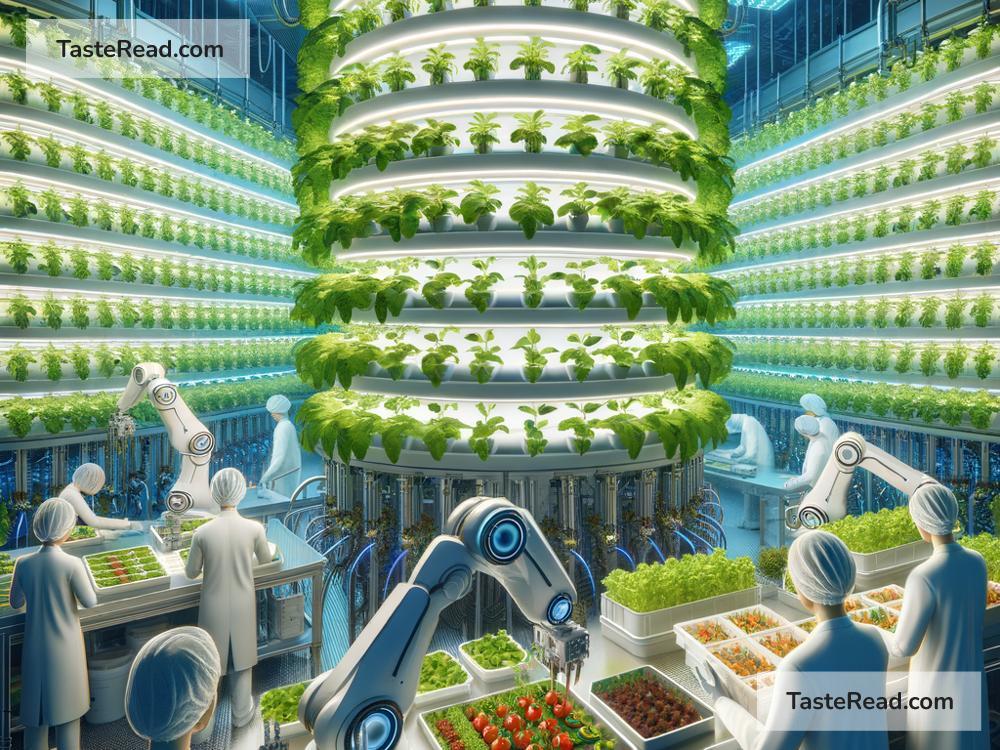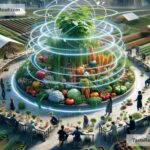The Future of Food and Innovative Financing: A Recipe for Change
The way we eat is changing, and the future of food is looking exciting and innovative. With more people concerned about health, sustainability, and fairness, the food industry is transforming in ways we’ve never seen before. At the same time, new ideas in financing are helping these changes happen faster. In this blog, we’ll explore how food and finance are coming together to create a better world for us and for the planet.
The Challenges Facing Food Today
Before we dive into the future, let’s look at the problems with food today. Our current food systems are struggling in many ways:
- Population Growth: As the global population grows, demand for food increases. Experts estimate we’ll need to feed nearly 10 billion people by 2050, which is no small task.
- Climate Change: Agriculture accounts for a huge chunk of greenhouse gas emissions, and extreme weather events are making farming harder. It’s clear we need to rethink how we grow and produce food to adapt to a changing climate.
- Food Waste: A shocking amount of food ends up in the trash—about one-third of the food we produce globally. Wasted food means wasted resources, like water and energy.
- Diet-Related Illness: Poor diets are leading to health problems like obesity, diabetes, and heart disease. Many people don’t have access to nutritious, affordable food.
- Economic Disparities: Farmers, especially in developing countries, often earn very little despite working hard to grow the food we all depend on.
The Future of Food: A New Way to Eat and Grow
In the face of these challenges, innovation is offering hope. Here are some exciting trends shaping the future of food:
1. Lab-Grown Meat
Scientists are creating meat in laboratories that looks, tastes, and feels just like the real thing—without needing to raise or kill animals. Lab-grown meat (also known as cultivated meat) could slash greenhouse gas emissions, save water, and prevent deforestation caused by traditional livestock farming. It might also be a cruelty-free alternative for meat lovers.
2. Plant-Based Proteins
Plant-based diets are becoming more popular, and companies are coming up with clever ways to replace traditional meat and dairy. Foods made from peas, soy, mushrooms, and even algae are packed with protein but require fewer resources to produce.
3. Vertical Farming
Imagine farms stacked on top of one another inside buildings—this is vertical farming. Using LED lights and controlled environments, vertical farms let us grow food in cities, year-round, without depending on the weather. This method uses less land and water than traditional farming.
4. Climate-Resilient Crops
Scientists are developing crops that can withstand droughts, floods, and high temperatures caused by climate change. These “super crops” have the potential to ensure global food security even in tough conditions.
5. Food-Tech Apps and AI
Technology is making it easier to reduce food waste and improve access. AI is helping farmers predict yields, monitor soil health, and fight pests. Apps are connecting customers with surplus food from restaurants and grocery stores so it doesn’t end up in landfills.
6. Regenerative Farming
This farming method not only grows food but also improves soil health and biodiversity. Regenerative farming reduces carbon emissions and ensures food can be grown for generations to come.
Innovative Financing: Fueling Food Futures
All these innovations sound great, but they need money to become reality—and that’s where innovative financing comes in. Traditional funding models often focus on short-term profits and lack the vision for addressing long-term challenges like food security. Here are ways the financial world is adapting:
1. Crowdfunding
Through platforms like Kickstarter, individuals can invest small amounts to support food startups and farming projects. Crowdfunding makes it possible for innovators to launch big ideas without relying solely on big investors.
2. Impact Investing
Some investors are choosing to put their money into projects that make a positive impact on society and the environment, rather than just seeking profit. For example, investing in a company that produces plant-based proteins or reduces food waste benefits both the planet and people.
3. Carbon Credits
Farmers who practice eco-friendly farming methods, like planting trees or using regenerative techniques, can earn carbon credits. They can then sell these credits to companies looking to offset their carbon footprint. It’s a win-win for the climate and farmers.
4. Food Tokenization
With blockchain technology, farmers and companies can tokenize their produce, allowing buyers to purchase guaranteed food in advance. This reduces uncertainty for growers and helps buyers access affordable food in the future.
5. AgTech Startups
Many startups focused on agricultural technology (AgTech) are emerging, but they often need funding to scale up their ideas. Venture capital is playing a key role in supporting innovations like vertical farms and AI-powered tools.
6. Community-Based Funding
Locally-focused financing allows communities to pool their resources to support sustainable farmers and food hubs. This empowers local economies and reduces dependence on global supply chains.
A Better Tomorrow Through Food and Finance
The future of food is not just about taste or convenience—it’s about solving serious problems for people and the planet. Innovations like lab-grown meat, vertical farming, and food-tech startups are reshaping the way we produce and consume food. Meanwhile, creative financing methods such as crowdfunding, impact investing, and carbon credits are ensuring these ideas can grow and thrive.
As individuals, we can support this transformation by making conscious choices about what we eat and how we invest. Whether it’s buying plant-based proteins or donating to a food-tech crowdfunding campaign, every small action adds up.
The future of food and finance is interconnected, and as these two worlds evolve together, they offer us a chance to create a healthier, fairer, and more sustainable planet. Let’s work together to make that vision a reality.


